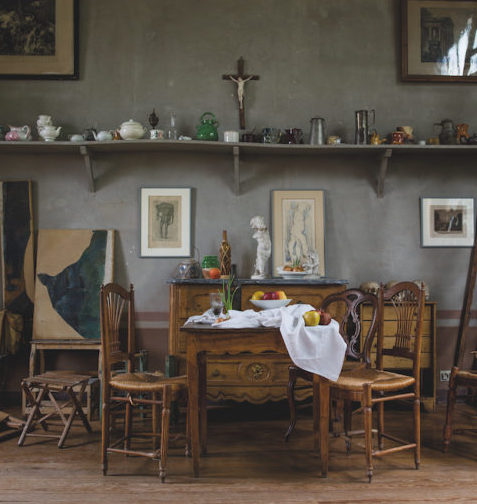Cezanne’s gray
Joel Meyerowitz makes some excellent observations about what he noticed when he saw color of the walls in Cezanne’s studio and how that color’s fluid properties, as the background for whatever Cezanne observed in his still life paintings, helped give birth to modernism. Delightful. It’s also wonderful to recognize the little sculpted Cupid still there, so familiar from Cezanne’s painting of it. Here’s an except from the fine little essay, which is actually itself an excerpt from Meyerowitz’s new book, Cezanne’s Objects:
Cézanne painted his studio walls a dark gray with a hint of green. Every object in the studio, illuminated by a vast north window, seemed to be absorbed into the gray of this background. There were no telltale reflections around the edges of the objects to separate them from the background itself, as there would have been had the wall been painted white. Therefore, I could see how Cézanne, making his small, patch-like brush marks, might have moved his gaze from object to background, and back again to the objects, without the familiar intervention of the illusion of space. Cézanne’s was the first voice of “flatness,” the first statement of the modern idea that a painting was simply paint on a flat canvas, nothing more, and the environment he made served this idea. The play of light on this particular tone of gray was a precisely keyed background hum that allowed a new exchange between, say, the red of an apple and the equal value of the gray background. It was a proposal of tonal nearness that welcomed the idea of flatness.

Comments are currently closed.